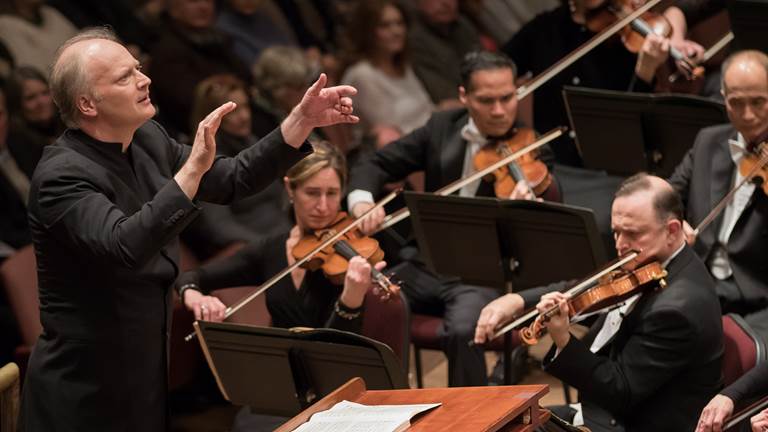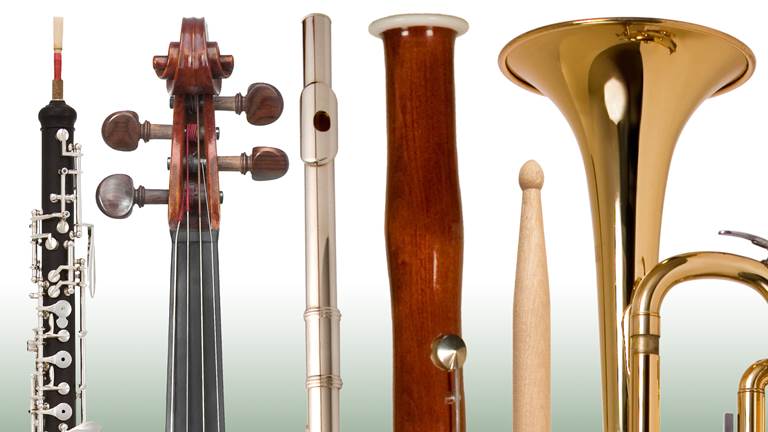Considered by many subsequent Russian composers as the father of modern Russian music, Mikhail Ivanovich Glinka was something of an unlikely hero.
An aristocrat and a dilettante, he became a determined reformer of Russian music through his passion for Italian and French culture. His operas, though Russian in subject, used Italian and French operatic practice and forms as models on which to build.
Glinka was born in Novospasskoye in the district of Smolensk, and spent much of his early childhood living with his maternal grandmother whoseemsmothering affection seems to have aggravated the boy's already Sensitive nature. From infancy Glinka demonstrated a remarkable affinity for musical sounds; living on his father's estate he developed a love for the local folk music which remained with him for life. Such music would often send him into long reveries "possessed by delicious languor" as he described it.
As a child of the aristocracy, Glinka received a private education. His governess, Varvara Klammer, was his first piano teacher. At the exclusive St. Petersburg school to which he was dispatched in 1817 he continued private piano tuition, ploying the Irish composer John Field for a few lessons, then on to Charles Meyer for further instruction. Glinka began trying to compose in 1822, with very little formal theoretical training to guide him, but none of his early compositions deviate markedly from the prevailing German and Italian models.
During the early 1820s Glinka traveled around Russia; in typical Romantic style, he was impressed by the scenery, especially the Caucasus Mountains. In 1824, after spending some months on the family estate studying Classical masters, he joined the Ministry of Ways and Communication in St. Petersburg.
Though financially secure, he clearly felt the need of more direction in his life and found the society of St. Petersburg entertaining and diverting. A natural dilettante, Glinka indulged in an endless series of dalliances with pretty young girls, hardly pausing to marry one of th before resuming where he left off. During the reminder of the decade he continued his desultory composing and music study with a variety of teachers. The period in St. Petersburg was vital in forming his intellectual outlook; he was moving in distinguished literary circles which included men like Alexander Pushkin and Leo Tolstoy, and meeting inent musical practitioners.
By 1828 he had tired of working for the Ministry; pleading ill-health, he resigned and took himself off to Italy for three years. There he fell in love with Italian culture, became a friend of Gaetano Donizetti and Vincenzo Bellini, and for a while wrote pieces drenched in the Italianate style of the period. This great passion proved to be the final part of the formative process which eventually bore fruit in his operas. During the latter part of his stay in Italy he began to yearn for the melodies of his native land, resolving to create an opera which would contain a specifically Russian sensibility, just as Donizetti's and Bellini's were quintessentially Italian.
In 1833 Glinka moved to Berlin where he took his first serious course of study in music theory under Siegfried Dehn an enlightened choice. Dehn was a musical scholar of the highest caliber and conducted his own rigorous researches into such disparate and unlikely subjects as the then unfashionable Johann Sebastian Bach and the virtually forgotten Orlando di Lasso. Dehn set about syst atizing Glinka's already substantial but uncoordinated musical knowledge.
On Glinka's return to Russia the following year due to his father's death, he was well enough equipped musically to att pt a national opera along the lines he had envisaged. When the poet Vasily Zhukovsky suggested the historical story of Ivan Susanin and his heroic sacrifice to save the Tsar during war with Poland, Glinka saw an opportunity to introduce music from both Poland and Russia as the basic materials with which he could mould a truly Russian opera.
This became A Life for the Tsar and although much of the forms, especially when vocal set-pieces were involved, were borrowed from French and Italian opera, Glinka went far beyond his models in using novel musical means (including the pioneering use of leitmotifs) to bring a real musical and dramatic unity to the opera. It was premiered in the presence of the Imperial family in November 1836, two years after its completion, and was an immediate success.
This led to his appointment as choirmaster to the Imperial Chapel (1836-39) on whose behalf he visited Little Russia to look for new voices for the choir. This visit inspired him to make further studies of the region's music and sowed the seed of his later choral pieces. The follow-up to A Life for the Tsar took some time to write, partly because of Glinka's natural tendency to laziness, partly because of his inability to get a satisfactory libretto completed, and partly because his health proved frail during a time when his marriage was disintegrating. His wife finally left him to marry another man-without bothering to divorce him first.
During these years he spent much time in the countryside, and composed a set of 12 songs with the collective title of A Farewell to St. Petersburg, which dealt with the thorny problems of his private life. Finally, in November 1842, Ruslan and Lyudmila was ready for production. All St. Petersburg's society attended the opening. Glinka used very similar compositional methods in Ruslan and Lyudmila to A Life for the Tsar; although the results were quite different, in part due to the different nature of the plot (taken from Pushkin), and partly because the models he used to contrast with the native Russian style were taken not from Poland, but from Persia, Turkey and states bordering Russia.
This exoticism fazed the audience, and the plot, which reflects Pushkin's idea of the rulers-to-be having to endure severe trials before attaining their thrones, caused the Tsar's party to leave early. Under these circumstances, it is hardly surprising that Ruslan and Lyudmila failed to please. Its more adventurous musical nature, beautiful in its own right and perfectly in tune with the fantasy element of the story, later supplied much musical food for thought to composers such as Modest Mussorgsky, Nicolai Rimsky-Korsakoff and Alexander Borodin.
However, Glinka's sense of undeserved failure left him a bitterly disappointed man. Now deprived of domestic stability and with a monumental operatic flop on his hands, Glinka resolved to travel and forget, and spent much of the rest of his life wandering from one European cultural centre to another, to France and Spain in particular. He became a friend and ally of Hector Berlioz, whose music he tried to promote in Russia, and composed the occasional orchestral concert piece, such as Jota Aragonesa Spanish Overture #1 (1845) and the Kamarinskaya (1848), but little else was attempted.
He tried a few choral works in the 1850s, and the orchestral A Night in Madrid (1851), but a symphonic po based on Nikolai Gogol's Taras Bulba remained unfinished at his death. The following year, on the trail of the roots of Western harmony in the old modes, he returned to Berlin to study with Dehn once more. Shortly after his arrival he suffered a seizure and died. He was buried in Berlin; four months later his remains were moved to St. Petersburg for reinterment, the Ceremony presided over by the dignitaries who had ignored him and his music for over a decade.




